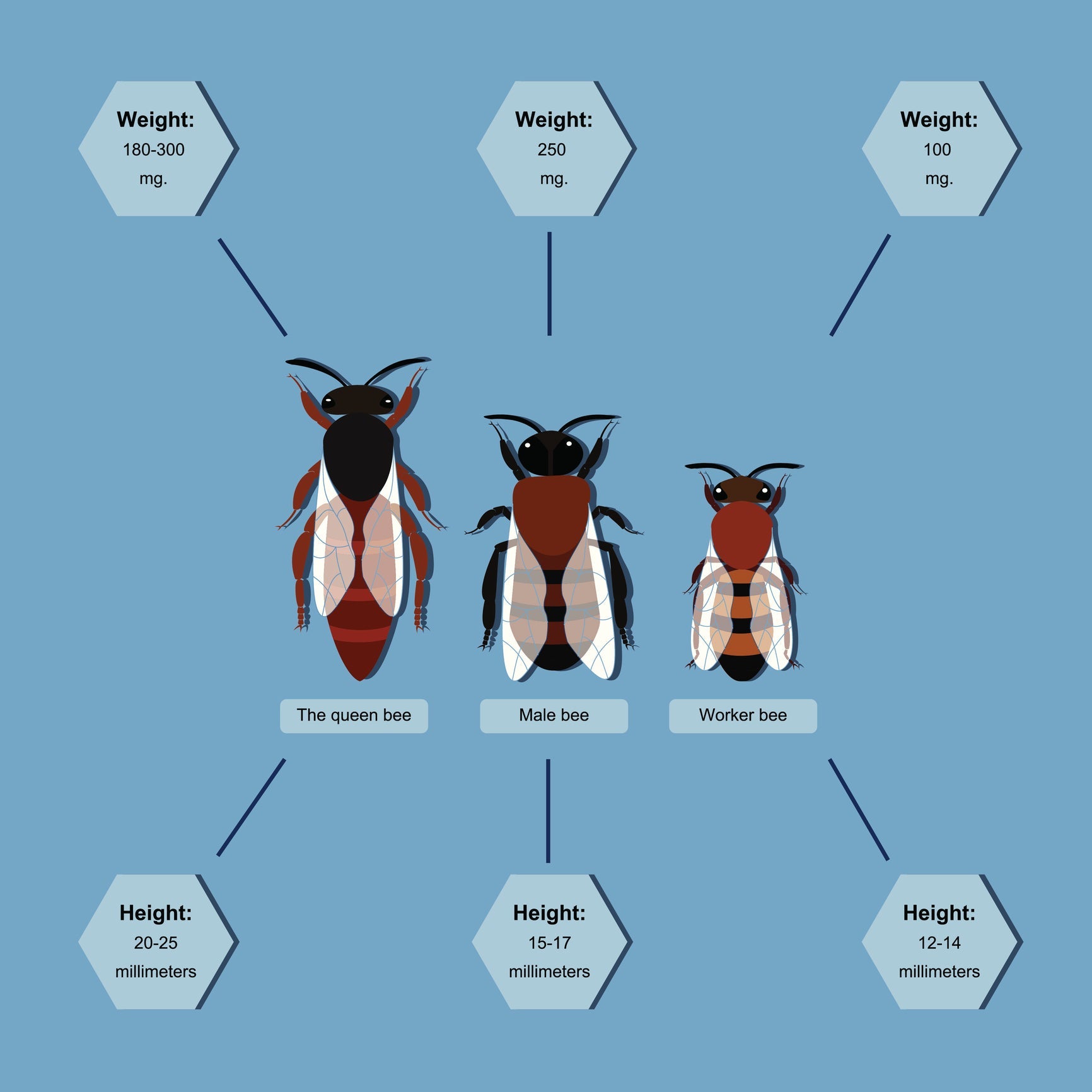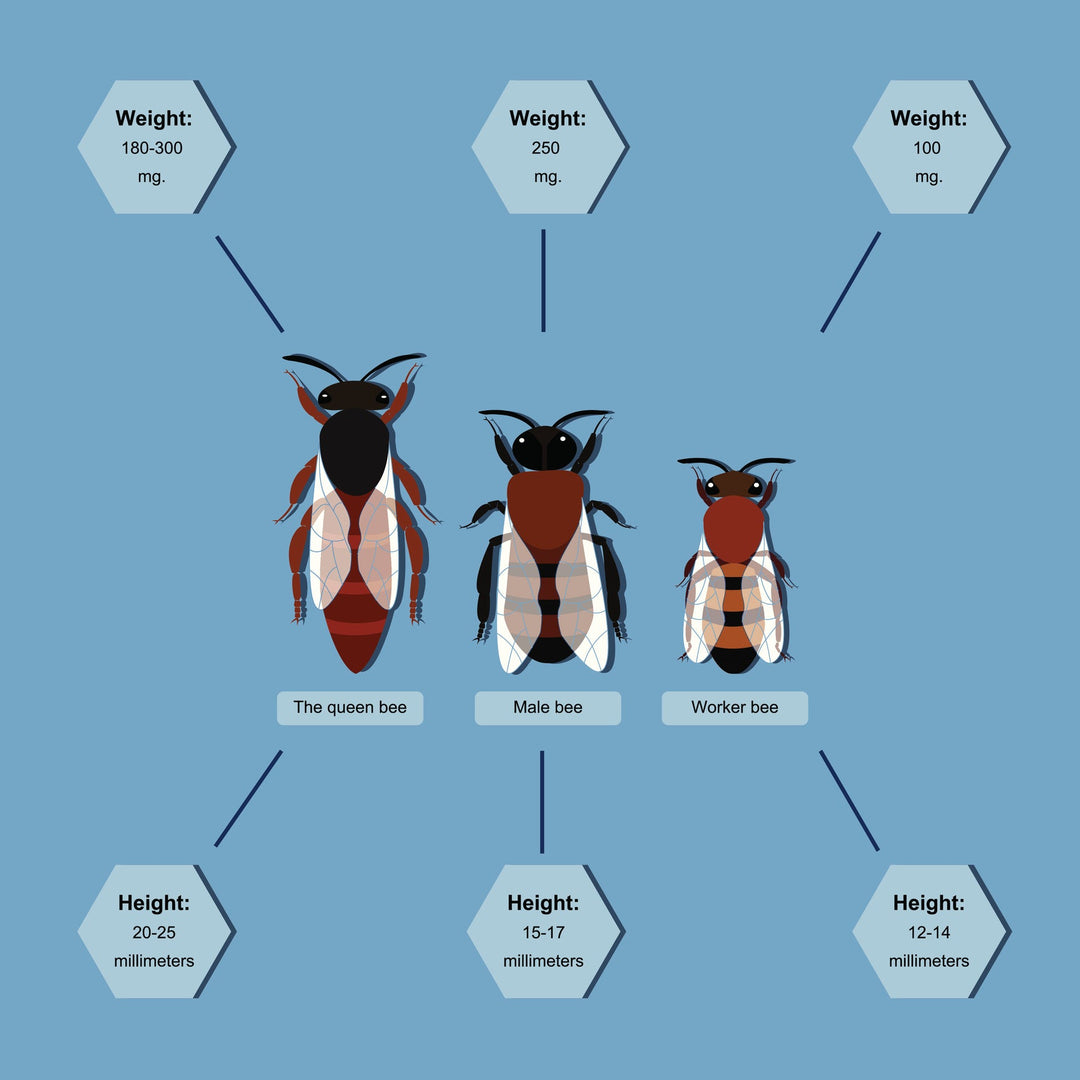When you think of bees, do you consider whether they’re female or male? The two sexes have very different roles in the hive, so let’s dig a little deeper into gender roles in the latest in our Bee Mini Series…
Female bees are called workers, and male bees are called drones. Each colony of bees is made up of workers and drones, with one female queen bee that’s noticeably larger than all of the other bees.
The queen bee has one role within a colony (whether it’s a colony living within a hive or somewhere else, such as within a tree or even under the eaves of your roof!): to produce offspring. One queen bee lays, on average, around 1,500 eggs per day!
Every single worker bee and drone in a colony would have been born to the queen of the hive, and it’s for this reason of colony survival that the entire hive looks after and protects the queen. A queen bee can potentially live for a few years.
Worker bees are the busy bees that go off foraging for nectar and pollen from nearby plants and trees to bring back to the hive to feed and nourish it and the queen. These female bees are also responsible for maintaining the hive's order and cleanliness.
Drones have one purpose – to mate with the queen of the hive, and other hives, to keep the cycle of life going. Drones usually die shortly after mating, and any that are left in the autumn months tend to die off when the hive slows down for the winter. Worker bees live longer, usually for a few weeks or months.
In terms of appearance, female worker bees are smaller and slimmer than the stockier drones, and have smaller eyes than the drones, which require larger eyes to locate the queens. Worker bees have a stinger (that they also lay eggs through) and short, straight antennae, whereas drones have no stinger and longer, curved antennae. (So, if you’ve been stung by a bee, you’ve been stung by a female!)
If you’d like to learn more about identifying different species and genders of bees, read our mini blog on the different bee species native to the UK, and donate to Friends of the Earth to get your Bee Saver Kit that includes a handy bee identifier chart.
We’ll be back soon with the next in our Bee Mini Series!






